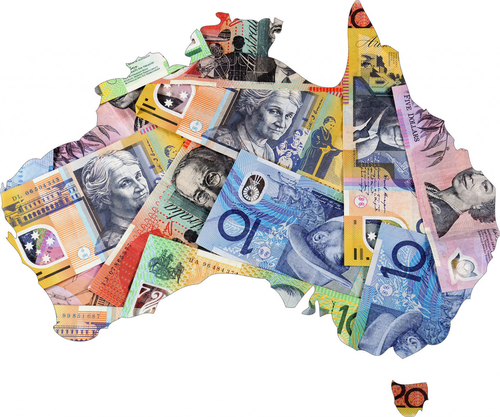

It is always nice to think something will go well. In Australia’s case, the Reserve Bank of Australia’s (RBA) Governor Lowe is aiming to keep the economy on an ‘even keel’ while returning inflation back to target.
It could very well be possible, but they will need a bit of luck on their side. They need the world economy to remain healthy – 21% of Australian GDP comes from exports. And they need the Australian consumer to remain actively buoyant – 54% of Australian GDP comes from household consumption.
But they might well get lucky and blow forecasts out of the water. Here are four reasons why:
Global recessions are not as deep as once thought. Despite our best efforts to convince the market that it may well need to live through a miserable 2023 – Dominique is expecting the Federal Reserve (Fed) to hike could hike to 8% while Dalvir’s models suggest a US recession is 89% likely within the next year – things might not turn out to be so bad.
What if the US economy could live at 5%? Or, alternatively, what if inflation subsides and the Fed need not hike to 8%? Then the backwardation priced into commodity curves is likely all wrong. That is, they should be in contango. This means Australia would be selling its exports for far more than currently priced.
RBA need not hike as high as expected. At the time of writing, markets have implied a terminal rate just shy of 4%. We think they will be forced to stop before that, so let us assume that they will.
Now, let us add that the Australian consumer still likes to go to their local coffee shop, and can, with a far higher policy rate than they had once been promised by Governor Lowe. Perhaps they go shopping for a new outfit, too, just because they can. After all, inflation has subsided, their salary has been bumped higher and they have saved their extra pennies. That is nearly 75% of the economy now running smoothly.
China returns to normality, faster than expected. Now we can assume the world is living in a world of luxury – it has survived a 400bp+ rate hike cycle and recovered from double-digit inflation unscathed – there remains a thorn in the side of the Australian body. What if China, its biggest trading partner, remains ruled by zero-Covid?
The subject is a thorny one. Protests have started as cases surged. But the most powerful people in the country, the Politburo Committee, are yet to meaningfully budge on their ideology.
A full re-opening would boost global demand (in particular, for commodities) and would aid commodity exporters globally (i.e., Australia). Markets expect a re-opening by Spring 2023, but what if it were to happen by January?
Australia and China are best friends again. To fully benefit, Australia and China must thaw an ice-cold relationship – China imposed trade restrictions on 10 Australian exports, including coal and iron ore. In recent developments, Anthony Albanese became the first Australian Prime Minister to meet Chinese President Xi Jinping in six years, suggesting the ice is melting.
So, take a step back. Forget the Fed hiking to 8%, Australia’s sensitivity to changes in the interest rate, China’s zero-Covid policy, and the patchy Australia-China relationships. Instead, picture the global economy living with American rates at 5%, subsiding Australian inflation, and China churning through global commodities, Australian coal and iron in particular. The Australian economy is set to boom like no other.
Ben Ford is a Researcher at Macro Hive. Ben studied BSc Financial Mathematics at Cardiff University and MSc Finance at Cass Business School, his dissertations were on the tails of GARCH volatility models, and foreign exchange investment strategies during crises, respectively.
